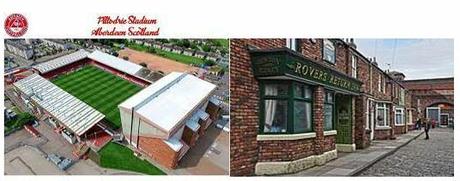
White Christmas sites in Aberdeen and Coronation Street Manchester
The word blizzard seems to have originated in the United States and according to Richard Wild the word blizzard can mean “blow, blast, blister and bluster”. It could also mean a flurry of knockout punches or a volley of musket shots in the American Civil War era. However, the strongest evidence suggests the origins of the word blizzard derives from the Germans who settled the mid-West states such as Virginia and Iowa in and around the 1850s. These German settlers witnessed the violent winter storms brought by north-easterly winds followed by winter depressions and low pressure. They called these violent storms “Der sturm komm blitzartig” meaning “the storm comes lightning like”. Therefore, the move from “blitzartig” to “blizzard” is not too difficult.The first use of blizzard referring to blinding snowstorm seems to have occurred in the Dakota Republican to describe weather events during the winter of 1867-1868. In some ways America seems to be assaulted by blizzards from the north, tornados from the south, hurricanes from the east and lunatic Democrats destroying the west, but I digress. From here on the use of the word blizzard to describe violent or severe snowstorms just snowballed in America with many more publications using the word. From its American roots the word blizzard was first used in England to describe the snowstorm of March 1891. According to Wild, the first official use of the word blizzard in the United Kingdom occurred in the snow storm of 27th February-1st March 1937. Since then, the word blizzard is used for events such as heavy snow falls, as the word sounds dramatic in news media reports.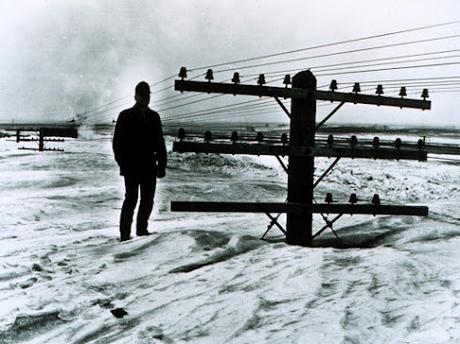
image of the Iran blizzard of 1972
Blizzards can be destructive events and throughout history they have wreaked havoc in countries all over the world. The 1972 Iran Blizzardd (photograph above) was the worst in recorded history and caused the deaths of 4,000 people with 26 feet/7.9 metres snow totally covering 200 villages. Beginning on February 3rd, the snow fell for several days and an area around the size of England was entirely buried under snow. Many people went inside their homes to escape the snowfall but they became trapped and froze to death in them.In America, the Great Blizzard of 1993 (photograph below) began on March 12th 1993, lasted for three days and was noted for its intensity, extent and widely felt impact. At one point the storm stretched from Canada down to Central America but the United States and Cuba bore the brunt of the Great Blizzard. As the storm moved it produced hurricane force winds, storm surges and tornados. Some 40% of the American population bore the brunt of the Great Blizzard which killed around 270 people.
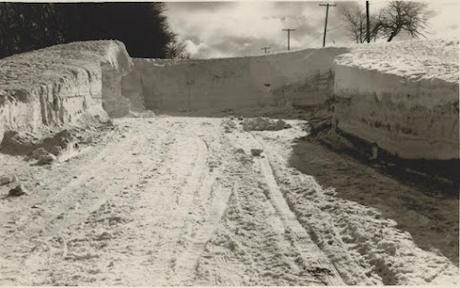
image of the Great Blizzard of 1933 in America
One of the coldest winters in British history occurred in the winter of 1962-1963 known as the Big Freeze. On December 12th -13th snow began to fall across the county and a blizzard blasted south-west England and Wales. The snow kept falling until February 1963 when a 36-hour blizzard in a force 8 gale caused huge snowdrifts across the country. Some of these snowdrifts were twenty feet deep. March 6th 1963, was the first morning for months that there was no frost and a gradual thaw set in to ease the country out of its winter deep freeze.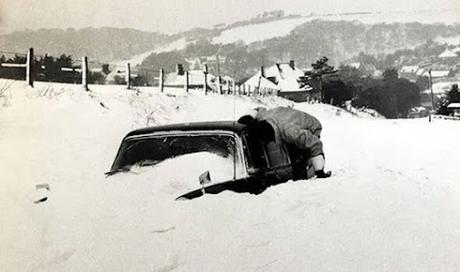
image of the aftermath of the Big Freeze of 1962-63 in the UK
Blizzards are a weather phenomenon which can leave huge destruction and death in their trail. The aftermath of a blizzard can be quiet, peaceful even and bring a winter beauty all of its own. However, it is unlikely there will be blizzards this Christmas although there may be a smattering of snow in the hills or mountains. Whether there will be a white Christmas is open to debate. Maybe the nearest we will get to a blizzard this winter is Sara Blizzard, the BBC Weather Presenter on North West Tonight informing us of yet another unwhite Christmas. Who knows, Sara might even sing White Christmas if one occurs this year. Or indeed, if one does not occur this year.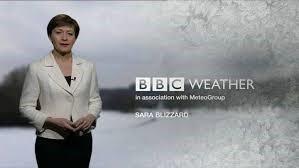
Sara Blizzard presenting the weather
Blizzard
It comes from the North and the East,
a wild, wild raging beast, inflicting its
terrifying power, making everyone cower,
and pray for an end to its unrelenting
whiteout, wipe-out fury.
But the storm’s hostility engenders
a feeling of futility, so people rush to
find a shelter, a fortress to hide
behind, to flee the ice, the snow,
the wind fired hell, scream,
pray, yell, and fall under the
storm’s malevolent spell.
Then it leaves everything peaceful, calm,
still, survivors view the devastation in
a mute stupification, the shovels,
tractors, diggers move the snow, the
ice, the drifts and people take it in
shifts to wonder what the hell happened.
Thanks for reading.Happy Christmas everyone and all the best for New Year. Dermot Email ThisBlogThis!Share to TwitterShare to Facebook
